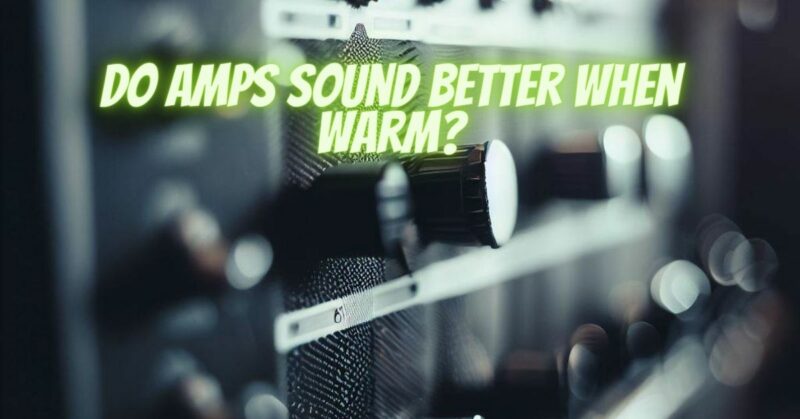The world of audio equipment often presents enthusiasts with various myths and misconceptions. One such belief is that amplifiers sound better when they are warm or have been running for a while. In this article, we will delve into the concept of amplifier warmth, its potential effects on audio performance, and whether this belief holds true in the realm of audio engineering.
Understanding Amplifier Warm-Up
The idea that amplifiers sound better when they are warm is based on the assumption that electrical components, such as transistors and capacitors, may exhibit different characteristics at different temperatures. Proponents of this concept argue that allowing an amplifier to warm up can result in improved audio quality. However, this idea is not without its nuances.
Components at Work
Amplifiers, whether solid-state or tube-based, consist of various electronic components. These components include transistors, resistors, capacitors, and more. Each of these components has specific electrical properties, and their behavior can change with temperature.
Solid-State Amplifiers: Solid-state amplifiers are built around transistors, which are known to have consistent performance across a wide temperature range. In general, they are not as susceptible to temperature-related variations as tube amplifiers. Therefore, the idea of warm-up primarily applies to tube amplifiers.
Tube Amplifiers: Tube amplifiers contain vacuum tubes, and the concept of “warming up” is more relevant in this context. Vacuum tubes can take some time to reach their optimal operating temperature. During this warm-up period, the characteristics of the tubes may change, potentially affecting the amplifier’s sound.
The Impact of Warm-Up
Whether or not an amplifier sounds better when it’s warm depends on several factors:
- Tube Amplifiers: In tube amplifiers, the warm-up period is often crucial for achieving optimal sound quality. As the tubes reach their operating temperature, they stabilize, which can result in smoother and more consistent performance. Many enthusiasts argue that tube amplifiers sound better after they have been running for a while, allowing the tubes to settle into their ideal operating conditions.
- Solid-State Amplifiers: Solid-state amplifiers are less affected by temperature changes, and their performance tends to remain consistent regardless of warm-up time. The effect of warm-up on solid-state amplifiers is usually minimal or negligible.
- Listener Bias: It’s important to consider the psychological aspect of warm-up. Some listeners may believe that amplifiers sound better when they are warm simply because they expect them to. This phenomenon is known as listener bias and can influence perception.
- Room Temperature: The ambient temperature of the room can also play a role. In very cold environments, components may take longer to reach their optimal temperature, potentially affecting performance. Conversely, in very hot conditions, heat buildup within the amplifier can lead to thermal issues.
In conclusion, whether amplifiers sound better when warm largely depends on the type of amplifier and its components. Tube amplifiers, in particular, benefit from a warm-up period, as it allows the vacuum tubes to stabilize, potentially resulting in improved sound quality. Solid-state amplifiers are generally less affected by temperature variations.
However, it’s crucial to acknowledge that the perception of better sound when an amplifier is warm can be influenced by listener bias and individual preferences. Ultimately, the impact of warm-up on audio quality is nuanced and may vary from one system to another. It’s advisable for audiophiles to experiment and trust their ears while considering the specific characteristics of their amplifier and room conditions.

